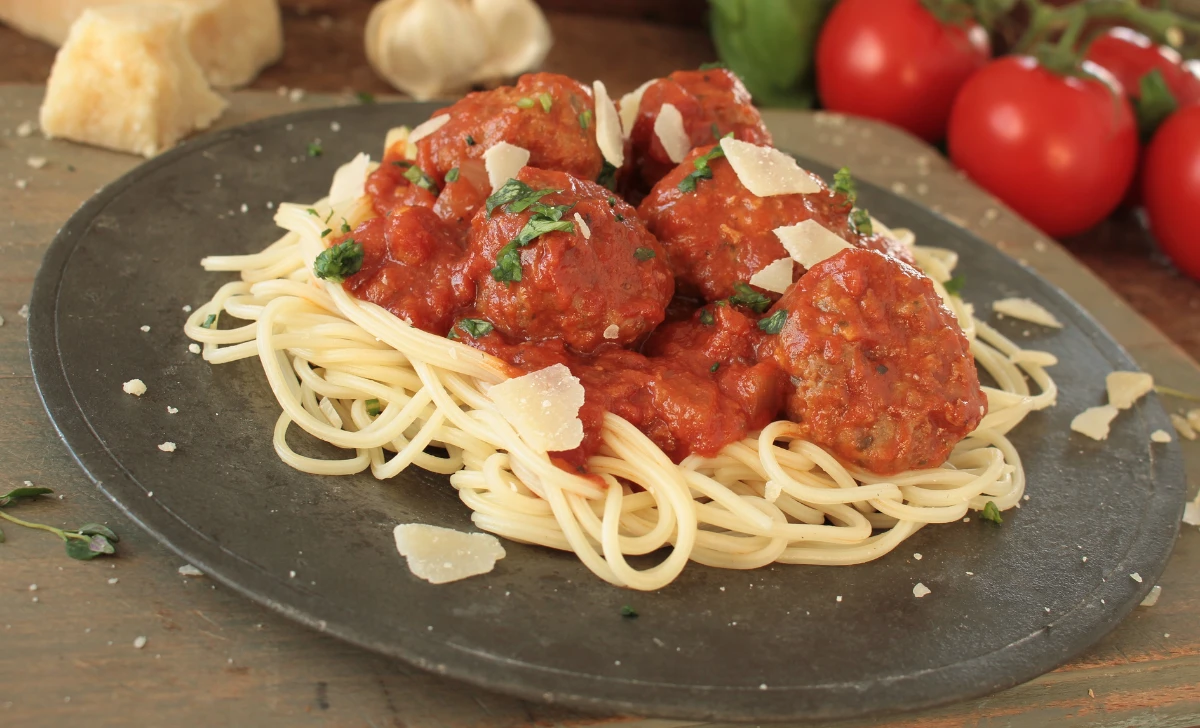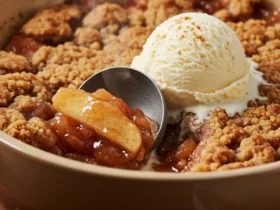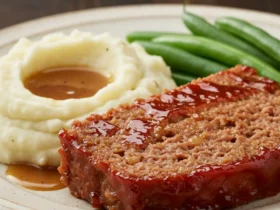Are you tired of the same old spaghetti recipes and looking to add some excitement to your dining experience? Look no further! In this article, we will take you on a wild culinary journey as we explore the fascinating world of bear spaghetti. Yes, you heard it right! Bear meat combined with perfectly cooked spaghetti noodles creates a flavorful and hearty dish that will leave you craving for more. Join us as we delve into the ingredients, preparation, and serving suggestions for this adventurous recipe.
[ez-toc]
History
The history of the bear spaghetti recipe traces back to ancient times when humans first discovered the unique flavors and nutritional benefits of bear meat. Bears have been hunted for their meat by various cultures around the world for centuries. In many traditional societies, bears were revered for their strength and considered a symbol of power and resilience.
As civilizations evolved, so did their culinary practices. People began to experiment with different cooking techniques and ingredients, leading to the creation of diverse recipes. It was during this exploration of flavors that the idea of combining bear meat with spaghetti emerged.
The exact origin of the bear spaghetti recipe is difficult to pinpoint, as it evolved organically through cultural exchanges and personal innovations. However, it is believed that the recipe gained popularity in regions where bears were abundant, such as parts of North America, Europe, and Asia.
Over time, bear spaghetti became a dish that showcased the culinary prowess and adventurous spirit of those who dared to try it. It was often prepared during special occasions or gatherings, where it served as a symbol of communal bonding and celebration.
The bear spaghetti recipe continued to be passed down through generations, with each family adding their unique twist to the dish. As travel and globalization increased, the recipe reached new corners of the world, captivating the taste buds of adventurous food enthusiasts.
Today, the bear spaghetti recipe stands as a testament to the rich history and cultural diversity of our culinary heritage. It represents the fusion of traditional flavors with modern culinary techniques, offering a thrilling and unforgettable dining experience for those who are willing to embark on this gastronomic adventure.
So, if you’re looking to explore new flavors and embrace the thrill of culinary experimentation, why not try your hand at preparing bear spaghetti? Remember to source your ingredients responsibly and follow all local regulations and guidelines regarding the consumption of game meat. Get ready to embark on a journey of flavors and indulge in a unique dining experience that pays homage to the rich history and traditions of our ancestors.
Time
| Step | Time |
|---|---|
| Preparing the Bear Meat | 30 minutes |
| Cooking the Spaghetti | 10 minutes |
| Bringing It All Together | 15 minutes |
| Total Cooking and Preparation | 55 minutes |
Note: The cooking and preparation times provided are approximate and may vary depending on individual cooking skills and equipment used. It’s important to always follow proper cooking techniques and ensure that the bear meat is cooked thoroughly to ensure food safety.
Ingredients
| Ingredients | Quantity |
|---|---|
| Bear meat | 1 pound |
| Spaghetti noodles | 8 ounces |
| Olive oil | 2 tablespoons |
| Onion | 1 medium-sized, diced |
| Garlic | 2 cloves, minced |
| Tomato sauce | 1 cup |
| Canned diced tomatoes | ½ cup |
| Italian seasoning | 1 teaspoon |
| Salt | To taste |
| Black pepper | To taste |
| Parmesan cheese | For garnish |
| Fresh basil | For garnish |
Note: The quantities mentioned are for a serving size of 2 people. Adjust the quantities accordingly based on your desired serving size and personal preferences.
Directions
Step 1: Preparing the Bear Meat
- Trim and Cut: Trim any excess fat from the bear meat and cut it into small, bite-sized pieces.
- Marinate (optional): If desired, marinate the bear meat in your choice of marinade for enhanced flavor. Refrigerate for at least 30 minutes or overnight.
- Sear: Heat a pan over medium-high heat and add a tablespoon of olive oil. Sear the bear meat pieces until browned on all sides. Set aside.
Step 2: Cooking the Spaghetti
- Boil Water: Bring a large pot of salted water to a boil.
- Add Spaghetti: Add the spaghetti noodles to the boiling water and cook according to package instructions until al dente.
- Drain and Rinse: Drain the cooked spaghetti and rinse it with cold water to stop the cooking process. Set aside.
Step 3: Bringing It All Together
- Sauté: In the same pan used for searing the bear meat, heat another tablespoon of olive oil over medium heat. Add the diced onion and minced garlic. Sauté until the onion turns translucent and the garlic becomes fragrant.
- Add Bear Meat: Add the seared bear meat back into the pan with the onions and garlic. Stir well to combine.
- Sauce it Up: Pour in the tomato sauce and canned diced tomatoes. Add Italian seasoning, salt, and black pepper to taste. Stir to evenly coat the ingredients. Simmer for about 10 minutes to allow the flavors to meld together.
- Combine with Spaghetti: Add the cooked spaghetti to the pan and toss it with the bear meat and sauce until well coated.
- Serve: Transfer the bear spaghetti to serving plates or bowls. Garnish with grated Parmesan cheese and fresh basil for added flavor and presentation.
Step 4: Serving Suggestions
- Pair the bear spaghetti with a side salad or garlic bread for a complete meal.
- Enjoy it with a glass of red wine to complement the rich flavors.
Now you’re ready to savor the unique and adventurous taste of bear spaghetti. Bon appétit!
Equipment Required
Nutrition Information
| Nutrition Information | Amount per Serving |
|---|---|
| Serving Size | 1 plate (approx. 1/2 of recipe) |
| Calories | 550 |
| Total Fat | 20g |
| – Saturated Fat | 6g |
| – Trans Fat | 0g |
| Cholesterol | 90mg |
| Sodium | 800mg |
| Total Carbohydrate | 50g |
| – Dietary Fiber | 5g |
| – Sugars | 8g |
| Protein | 40g |
| Vitamin D | 0mcg |
| Calcium | 150mg |
| Iron | 6mg |
| Potassium | 800mg |
Note: The nutrition information provided is an approximate estimation and may vary based on the specific ingredients used and any modifications made to the recipe. It is always recommended to refer to the nutritional labels of individual ingredients for more accurate information.
Tips
- Choosing Bear Meat: When selecting bear meat, ensure that it is sourced from a reputable and legal supplier. Follow local regulations regarding the hunting and consumption of game meat.
- Marinating: Marinating the bear meat before cooking is optional but can enhance the flavor and tenderness. Choose a marinade that complements the richness of the meat, such as a mixture of soy sauce, Worcestershire sauce, and herbs.
- Bear Meat Tenderness: Bear meat can be tough, so it’s important to cook it properly. Searing the meat before simmering it in the sauce helps seal in the juices and adds depth of flavor. Simmering the meat for a sufficient amount of time ensures it becomes tender.
- Spaghetti Cooking: Cook the spaghetti noodles until al dente (firm to the bite) to prevent them from becoming mushy when combined with the sauce.
- Adjusting Seasonings: Taste the sauce as you go and adjust the seasonings according to your preferences. You can add more Italian seasoning, salt, or black pepper to suit your taste.
- Cheese and Basil Garnish: The grated Parmesan cheese and fresh basil garnish add a burst of flavor and freshness to the dish. Feel free to experiment with other herbs or cheeses if desired.
Pros & Cons
| Pros | Cons |
|---|---|
| ✅ Unique and adventurous flavor | ❌ Availability of bear meat may be limited |
| ✅ A memorable and conversation-starting dish | ❌ Bear meat can be tough and requires proper cooking techniques |
| ✅ Showcases culinary creativity | ❌ Preparation time may be longer compared to traditional spaghetti recipes |
| ✅ Opportunity to explore game meat | ❌ Some people may have ethical or cultural reservations about consuming bear meat |
| ✅ Versatile recipe with room for personalization | ❌ Bear meat may have a stronger and distinct flavor that not everyone enjoys |
Conclusion
In conclusion, bear spaghetti is a recipe that offers a unique and adventurous twist to the traditional pasta dish. By combining the richness of bear meat with perfectly cooked spaghetti noodles, this recipe promises a flavorful and memorable dining experience. The fusion of flavors and the opportunity to explore game meat adds a touch of excitement to your culinary repertoire.
While bear meat may not be readily available for everyone, for those who have access to it, this recipe provides an opportunity to showcase culinary creativity and indulge in a dish that will be sure to spark conversations. The seared bear meat, combined with a delicious tomato-based sauce, creates a harmonious blend of flavors that will tantalize your taste buds.
Remember to follow proper cooking techniques and ensure that the bear meat is cooked thoroughly for both safety and optimal tenderness. Adjust the seasonings and ingredients according to your preferences, allowing you to personalize the dish to suit your taste.
So, whether you are a seasoned food enthusiast or simply someone looking to try something new, bear spaghetti offers an exciting and adventurous option. Embrace the culinary journey, unleash your creativity, and delight in the flavors of this unique recipe. Step out of your comfort zone and savor the experience of a truly exceptional meal.
Don’t hesitate to gather the necessary ingredients, follow the detailed directions, and embark on this gastronomic adventure. It’s time to expand your culinary horizons and indulge in the flavors of bear spaghetti. Get ready to create lasting memories and a dish that will surely leave a lasting impression on both you and your guests.
So, why wait? Take a leap of culinary faith and give bear spaghetti a try. Unleash your inner chef, celebrate the art of cooking, and enjoy the journey of flavors. Bon appétit!
Facts
- 🐻 Fact 1: Bear Meat, a Wild Delicacy!
- Did you know that bear meat has been enjoyed as a delicacy for centuries? In ancient times, bears were hunted for their meat, which was considered a symbol of strength and power. Today, bear spaghetti brings a touch of adventure to your dinner table!
- 🍝 Fact 2: Spaghetti, the Long and Short of It!
- Did you know that the word “spaghetti” comes from the Italian word “spaghetto,” which means “thin string” or “twine”? These long, slender pasta strands perfectly complement the rich flavors of bear meat, creating a satisfying and memorable meal.
- 🌍 Fact 3: A Global Gastronomic Adventure!
- Bear spaghetti is not limited to any specific region. It has made its way into various cultures around the world. From North America to Europe and Asia, adventurous foodies have embraced the unique combination of bear meat and spaghetti, creating their own twists on this intriguing recipe.
- 🌶️ Fact 4: Adding Spice to the Wild!
- Want to spice up your bear spaghetti? Consider adding crushed red pepper flakes or a dash of hot sauce. The heat will add an extra kick to the dish, balancing the rich flavors of the bear meat and adding a fiery element to your dining experience.
- 🎉 Fact 5: Bear Spaghetti, a Celebration Dish!
- Bear spaghetti has become a symbol of celebration and communal feasting. It is often prepared for special occasions or gatherings, bringing people together to indulge in a unique and memorable culinary experience. So, gather your loved ones, embrace the adventure, and celebrate the joys of good food and great company!
FAQ’s
Can I use a different type of meat instead of bear meat in the spaghetti recipe?
Yes, you can substitute bear meat with other game meats like venison or bison. Alternatively, you can use ground beef, pork, or turkey for a more accessible option.
Where can I find bear meat for the recipe?
Bear meat can be sourced from specialty butcher shops, game processors, or local hunters. Ensure that you follow local regulations regarding the hunting and consumption of game meat.
Is marinating the bear meat necessary?
Marinating the bear meat is optional but can enhance the flavor and tenderness. It is a personal preference, and the recipe will still turn out delicious without marinating.
What can I serve as a side dish with bear spaghetti?
Bear spaghetti pairs well with a side salad, garlic bread, or steamed vegetables. Choose a side that complements the flavors and adds freshness to the meal.
Can I freeze the leftovers?
Yes, you can freeze the leftover bear spaghetti. Store it in an airtight container or freezer bag for up to three months. Thaw and reheat thoroughly before consuming.
Are there any safety precautions to consider when cooking bear meat?
Ensure that the bear meat is cooked to a safe internal temperature of at least 160°F (71°C) to prevent any risk of foodborne illnesses. Use a meat thermometer to check the temperature.
Can I adjust the spice level of the recipe?
Absolutely! You can adjust the spice level by adding crushed red pepper flakes or a dash of hot sauce to the sauce. Taste as you go and customize it to your desired level of heat.
Can I make the recipe vegetarian or vegan?
Yes, you can make a vegetarian or vegan version of the recipe by substituting the bear meat with plant-based alternatives like textured vegetable protein (TVP), mushrooms, or plant-based meat substitutes.
Can I use gluten-free pasta for this recipe?
Yes, you can use gluten-free spaghetti or any other gluten-free pasta of your choice to make the recipe suitable for a gluten-free diet.
How long will the bear spaghetti last in the refrigerator?
The bear spaghetti can be refrigerated in an airtight container for up to 3-4 days. Make sure to reheat it thoroughly before consuming.












Leave a Review